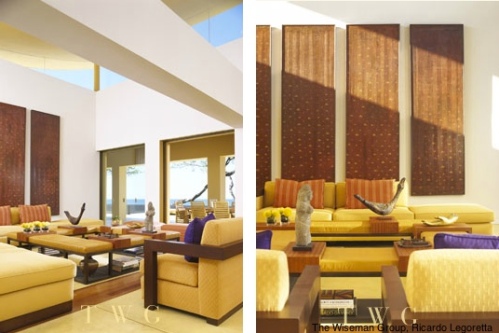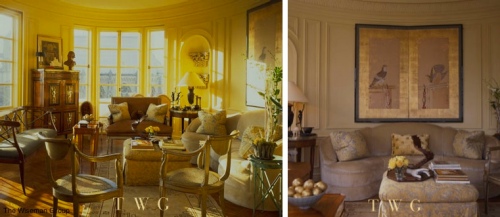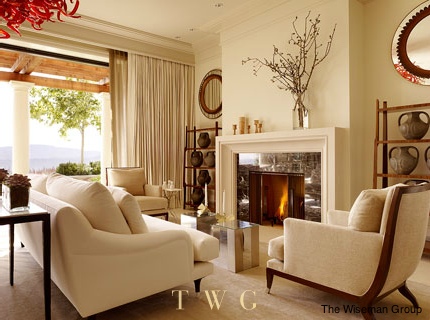I was just reading an article in Fast Company about why generalizing is often better than specializing in the job market, despite the push we’ve seen for decades to specialize, and it got me thinking of one of my pet peeves in the interior design world.
Today, most business consultants who work with interior designers are advising us to specialize for marketing reasons, often in a particular style or look, or targeting a particular demographic, which I think is a huge mistake. Clients also often look for designers who do the particular style they want to the exclusion of everything else, thereby likely ruling out a tremendous number of other highly competent designers who might actually do an even better job for them.
Oftentimes designers who only work in one style are basically repeating what they themselves prefer, which is fine if that’s what you really want, but if you want a really creative, and truly customized design, you want someone who has the ability to bring as broad a set of resources and skills to the table as possible – and the interest in doing so. It takes a little more work to keep up on a wider range of resources, to be sure, and not all designers really want to be bothered.
Speaking from experience as someone who has worked for and learned a great deal from a very gifted designer who nevertheless tends to stick to a similar aesthetic for all projects, it can also get really boring to a creative mind that gets fired up by a range of options and the process of really digging in and solving the specific problems each individual client has in a unique way, not applying the same solution to them all. Working in aesthetics other than those towards which one is personally inclined is a key way to keep the creative fires stoked, in what is fundamentally a creative discipline, and to keep that saw sharp.
The thing is, the fundamentals of the interior design, and the design process itself, are largely the same regardless of style, and a good designer who wants to create truly personalized solutions will deliberately cultivate the ability to work comfortably in a wide range of aesthetics.
What really matters most is the ability to truly listen to the client, and then to translate the client’s desires into tangible reality, and that entails a skill set that is completely independent of the style or color scheme selected. Scale is scale, balance is balance, etc., whether you are dealing with a modern building or a traditional one, and if someone is really good with color, they should be able to produce a wonderful color scheme in any hue in the rainbow.
Anyone can learn to repeat the same basic thing over and over again, but a big part of the point of hiring an interior designer is to have a customized solution that is unique to you and your own particular needs and style, and of course the architectural realities of your own home or office.
The reality is that not every designer can actually do it – or wants to be bothered.
Seeing projects that all look similar in someone’s portfolio raises the question about how versatile that designer really is. When you see a range of project styles that are all well done, you know you’re dealing with someone who has the ability to really customize as needed, and likely has a wider range of resources to bring to bear on the project as well. It takes more work to keep up on that range, but that also means the designer is clearly exposing herself to a wide range of options on a regular and ongoing basis – which can only mean good things for clients.
One of the world’s greatest designers, the Paul Vincent Wiseman of The Wiseman Group, who has long been one of my most revered design heroes, regularly demonstrates his ability to work brilliantly in virtually any style, as the contrasting photos above of his work attest. The first two projects shown, both frequently published and among my favorites of his work, could not be more different – the first, an apartment in an historic landmark building on top of San Francisco’s Nob Hill; the second, a vacation home in Hawaii built by one of the foremost modernist architects of our time. The third, equally distinct from the first two, is an estate in the Napa Valley with a 20th century design aesthetic with midcentury touches in a house built in a somewhat Spanish colonial style.
This is really what it means to be a great designer, in my opinion. You know just by looking at the range of his projects that Wiseman has both listened to and actually heard what his clients have said they wanted – and then delivered. Many of his clients have done multiple projects with him that span a wide range of styles, and he has to be able to handle that range, or frankly, he’d lose those clients to someone else when they want a different aesthetic in a new home. You know without asking that he could do anything asked of him, even if he hasn’t shown an example of that style or project type in his portfolio. Whether you like these particular examples or not, and regardless of your preference for these color schemes or others, these projects share the qualities of being perfectly scaled and designed for their respective spaces and environments, and every detail contributes harmoniously to the whole.
When you get into things like green design, aging-in-place/accessible/universal design, commercial design, or design for special functions like doctors’ offices or jails, then you do indeed get into a greater need for specialization and often additional training beyond that which is usually taught in design school. When dealing with nonresidential environments, building codes tend to play a larger role than they do in private homes, and the more specialized the function of the space, the more specialized the code and other technical issues.
Aging-in-place, etc. is becoming the big buzz word these days, and there is clearly growing demand, but I’ve encountered very few designers who have actually got the necessary training, or who otherwise show they’ve learned what they actually need to know to work with this specialized and growing market effectively, dealing with both the architectural requirements down to the selection of fabrics, colors, and furniture styles that are best for this market or subsets of it. With a few exceptions, most I’ve seen only understand part of the requirements. Strangely, most people who are Certified Aging in Place Specialists (a designation I hold, as one of only about four such certified interior designers in Northern CA) aren’t even designers, and while they could certain tell you where to put grab bars and how to build a ramp, and maybe do the work to install them, many couldn’t design their way out of a paper bag and integrate accessibility features into an overall beautiful aesthetic that doesn’t scream “institution” or “add-on” at you because they are simply not trained as designers.
For the vast majority of interior designers, however, and certainly within residential design or commercial design as broad overall categories, the ability to generalize and work in a wider range of styles is truly an asset, and the mark of a really proficient creative person – and one who is truly more interested in giving clients what they want than imposing a particular style upon them. Whether your project is a large estate or a single small room, wouldn’t you really rather know that this is your designer’s honest focus?
It is, of course, essential that your designer fully understand the code issues that are involved in whatever type of project you have, but at the end of the day, the way most people interface with their space demands the ability to produce the creative vision, and to make the technical matters disappear and to function seamlessly behind the scenes, supporting the overall desired function and aesthetic of the space.
If the designer is properly conversant with residential codes, she will be able to deal with them whether it’s a modern building or an older one, and the same for the commercial designer int he world of office buildings. Some designers know both, but not all. Don’t assume; ask what types of projects they have done and/or are trained to do. Just because there isn’t an example in her portfolio of exactly the type of space your project entails doesn’t mean she isn’t trained to handle it and can’t still do an excellent job. (Beware if the designer doesn’t know that there are huge code differences, however! And that they may need to use different contractors for different job types.)
It takes staying on top of continuing education whether it is required for local certification or not to maintain one’s knowledge of the technical side of things (and doing that is vastly more important in the end than any alphabet soup of professional designations a designer may or may not choose to obtain – and almost all of them are entirely optional and not required in any way by the vast majority of states and countries), but it is critically important not to forget the creative side of things, either, and to select a designer who shows she has the ability to do what a range of work, and to think outside the box.







